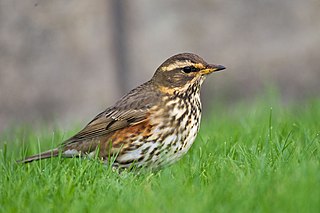
The redwing is a bird in the thrush family, Turdidae, native to Europe and the Palearctic, slightly smaller than the related song thrush.

The European green woodpecker, also known as the yaffle and sometimes called a nickle, is a large green woodpecker with a bright red crown and a black moustache. Males have a red centre to the moustache stripe which is absent in females. It is resident across much of Europe and the western Palearctic but in Spain and Portugal it is replaced by the similar Iberian green woodpecker.

The greater white-fronted goose is a species of goose, closely related to the smaller lesser white-fronted goose. The greater white-fronted goose is migratory, breeding in northern Canada, Alaska, Greenland and Russia, and winters farther south in North America, Europe and Asia. It is named for the patch of white feathers bordering the base of its bill: albifrons comes from the Latin albus "white" and frons "forehead". In the United Kingdom and Ireland, it has been known as the white-fronted goose; in North America it is known as the greater white-fronted goose, and this name is also increasingly adopted internationally. Even more distinctive are the salt-and-pepper markings on the breast of adult birds, which is why the goose is colloquially called the "specklebelly" in North America.

The common gull is a medium-sized gull that breeds in cool temperate regions of the Palearctic from Iceland and Scotland east to Kamchatka in the Russian Far East. Most common gulls migrate further south in winter, reaching the Mediterranean Sea, the southern Caspian Sea, and the seas around China and Japan; northwest European populations are at least partly resident. The closely related short-billed gull was formerly often included in this species, which was then sometimes known collectively as "mew gull".
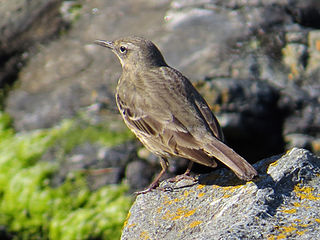
The European rock pipit, or simply rock pipit, is a species of small passerine bird that breeds in western Europe on rocky coasts. It has streaked greyish-brown upperparts and buff underparts, and is similar in appearance to other European pipits. There are two subspecies, of which the nominate is non-migratory, and the Fennoscandian one is migratory, wintering in shoreline habitats further west and south in Europe. The European rock pipit is territorial at least in the breeding season, and year-round where it is resident. Males will sometimes enter an adjacent territory to assist the resident in repelling an intruder, behaviour only otherwise known from the African fiddler crab.
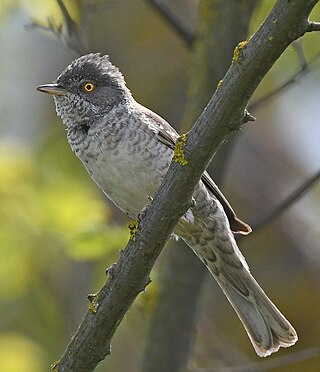
The barred warbler is a typical warbler which breeds across temperate regions of central and eastern Europe and western and central Asia. This passerine bird is strongly migratory, and winters in tropical eastern Africa.
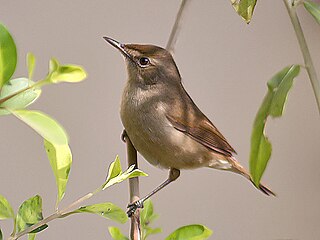
Blyth's reed warbler is a species of reed warbler belonging to the family Acrocephalidae, which also includes the tree warblers. Blyth's reed warbler breeds across the Palearctic zoogeographical region and winters in South Asia. The species has been expanding its range westwards in Europe.

The pine grosbeak is a large member of the true finch family, Fringillidae. It is the only species in the genus Pinicola. It is found in coniferous woods across Alaska, the western mountains of the United States, Canada, and in subarctic Fennoscandia and across the Palearctic to Siberia. The species is a frugivore, especially in winter, favoring small fruits, such as rowans. With fruit-crop abundance varying from year to year, pine grosbeak is one of many subarctic-resident bird species that exhibit irruptive behavior. In irruption years, individuals can move long distances in search of suitable food supplies, bringing them farther south and/or downslope than is typical of years with large fruit crops.

The long-toed stint is a small wader. The genus name is from Ancient Greek kalidris or skalidris, a term used by Aristotle for some grey-coloured waterside birds. The specific subminuta is from Latin sub, "near to" and minuta, "small" from its similarity to the little stint, Calidris minuta.

Franklin's gull is a small gull. The genus name Leucophaeus is from Ancient Greek leukos, "white", and phaios, "dusky". The specific pipixcan is a Nahuatl name for a type of gull.
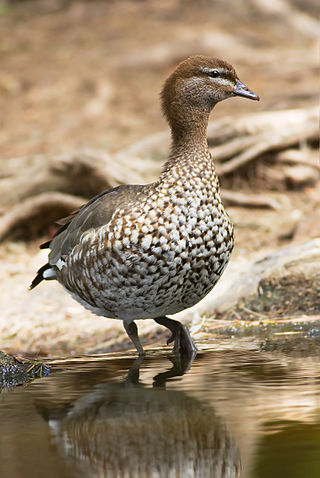
The Australian wood duck, maned duck or maned goose is a dabbling duck found throughout much of Australia. It is the only living species in the genus Chenonetta. Traditionally placed in the subfamily Anatinae, it might belong to the subfamily Tadorninae (shelducks); the ringed teal may be its closest living relative.
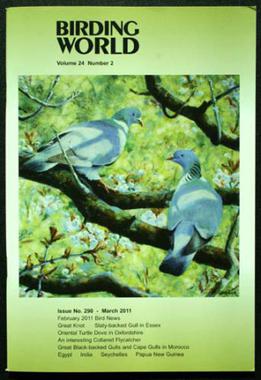
Birding World was a monthly birding magazine published in the United Kingdom. It was the magazine of the Bird Information Service, based at Cley next the Sea, Norfolk. With the publication of issue No. 26/12 in January 2014, Birding World magazine ceased publication.
Steve Madge was a birder, author, and bird tour leader, based in Cornwall, England.
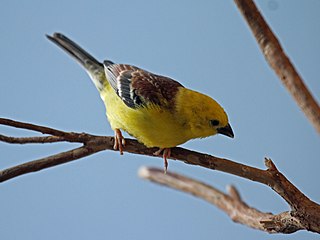
The Sudan golden sparrow is a small species of bird in the sparrow family found in sub-Saharan Africa. It is a famous cage bird, and in aviculture, it is known as the golden song sparrow. The Arabian golden sparrow and this species are sometimes considered one species, as the "golden sparrow".

The glaucous-winged gull is a large, white-headed gull. The genus name is from Latin Larus which appears to have referred to a gull or other large seabird. The specific glaucescens is Neo-Latin for "glaucous" from the Ancient Greek, glaukos, denoting the grey color of its wings.
Hadoram Shirihai is an Israeli ornithologist and writer.
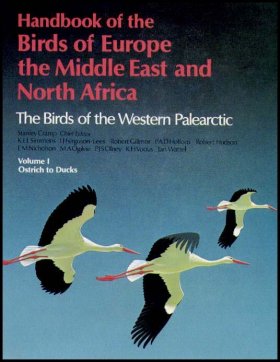
The Birds of the Western Palearctic is a nine-volume ornithological handbook covering the birds of the western portion of the Palearctic zoogeographical region.
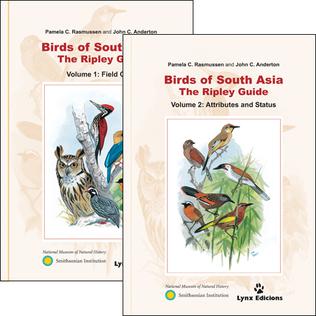
Birds of South Asia: The Ripley Guide by Pamela C. Rasmussen and John C. Anderton is a two-volume ornithological handbook, covering the birds of South Asia, published in 2005 by the Smithsonian Institution and Lynx Edicions. The geographical scope of the book covers India, Bangladesh, Pakistan, Sri Lanka, Nepal, Bhutan, Maldives, the Chagos Archipelago and Afghanistan. In total, 1508 species are covered. Two notable aspects of Birds of South Asia are its distribution evidence-base — the book's authors based their distributional information almost completely on museum specimens — and its taxonomic approach, involving a large number of species-level splits.
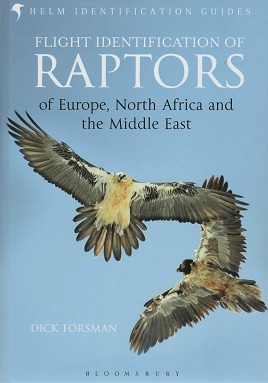
Flight Identification of Raptors of Europe, North Africa and the Middle East is a 2016 field guide by Dick Forsman, a Finnish ornithologist, with the purpose of helping the reader identify raptors in flight. It is part of the Helm Identification Guides series. The book is Forsman's second about raptor identification, following his 1999 book The Raptors of Europe and the Middle East, which also covered perched birds. Unlike the 1999 book, Flight Identification of Raptors covers North Africa, and includes over 60 species, with both North African species and rare vagrants to the Western Palearctic region, such as Pallas' fish eagle, being added. The book is a photographic field guide, and contains an introduction, two essays from other authors about topics related to raptors, and descriptions of each of the species covered. There are also discussions of common hybrids, which can make identification more complicated.
















